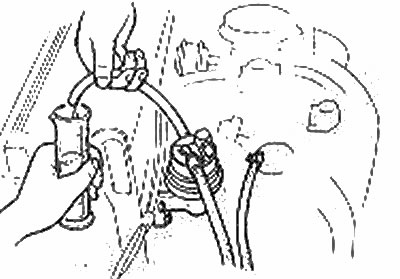Warning: Gasoline is extremely flammable so take extra precautions when working on any part of the fuel system. Do not smoke or be near open flames or incandescent lamps.
1. The fuel pump is bolted to the cylinder head on the side of the engine heat shield.
2. The fuel pump is sealed, so no repair is possible. However, it can be inspected and tested on the vehicle as follows.
3. Make sure there is fuel in the fuel tank.
4. With the engine running, check for signs of leaks at all fuel line connections between the fuel tank and the carburetor. Tighten all loose connections.
5. Inspect all hoses for signs of pinching or kinking that is restricting fuel flow. Air leaks or suction restrictions will significantly affect fuel delivery from the pump.
6. Check for signs of leakage at the fuel pump diaphragm flange.
7. Disconnect the ignition coil wire at the distributor, carefully route the wire away from the engine to prevent ignition sparks, then disconnect the fuel supply line from the carburetor and place it in a container.
8. Crank the engine a few turns and check for a good splash of fuel from the open end of the line. If not, the fuel line or filter is clogged or the fuel pump is faulty.
9. Disconnect the fuel line at both ends and pump compressed air through it. If the fuel line is not clogged, replace the fuel pump with a new one.

Fuel pump check
